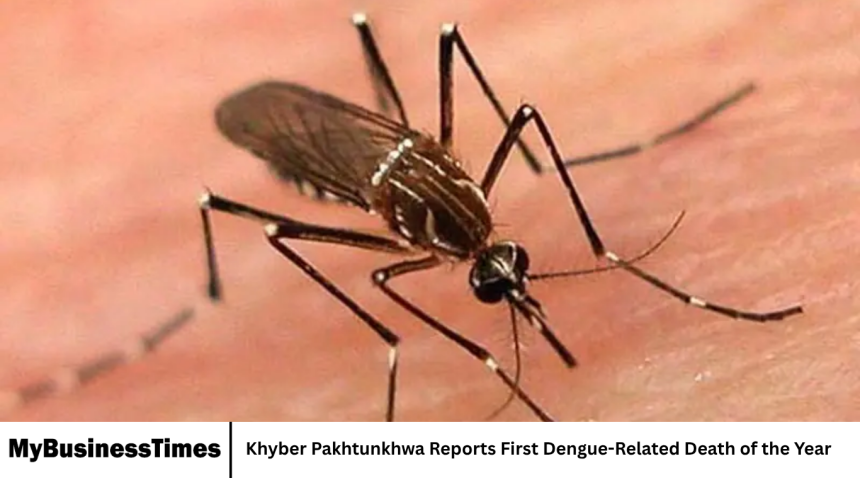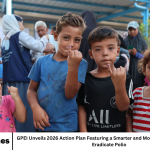Khyber Pakhtunkhwa has reported its first dengue-related death of the year, raising concerns among health authorities as the mosquito-borne disease continues to spread across several districts. The victim, a middle-aged man from Peshawar, succumbed to complications related to dengue fever after being admitted to a local hospital. This incident has prompted the provincial health department to intensify its surveillance, awareness campaigns, and preventive measures to curb further infections.
Current Situation of Dengue in Khyber Pakhtunkhwa
The recent death highlights the growing threat of dengue fever in the province, which typically sees a rise in cases during the post-monsoon season. Health officials have confirmed an increasing number of patients being admitted to hospitals, particularly in Peshawar, Mardan, Swat, and Nowshera.
The health department’s latest report indicates that hundreds of dengue cases have already been registered this year, with a notable uptick in urban centers where stagnant water and poor sanitation contribute to mosquito breeding. Authorities have urged residents to take extra precautions and cooperate with local teams conducting anti-dengue drives.
Government Response and Preventive Actions
In response to the growing cases, the Khyber Pakhtunkhwa Health Department has activated emergency response teams in high-risk areas. Vector control operations, including fumigation and larvicide spraying, have been launched in neighborhoods showing clusters of dengue infections.
Health officials are also coordinating with local administrations to remove sources of standing water, such as open drains, water tanks, and discarded containers. Hospitals across the province have been instructed to ensure the availability of diagnostic kits, blood platelet units, and trained staff to handle dengue patients efficiently.
Public awareness campaigns are being conducted through radio, television, and social media to educate citizens on preventive steps such as covering water containers, using mosquito repellents, and wearing protective clothing.
The Pattern of Dengue Outbreaks in Pakistan
Dengue fever has become a recurring public health issue in Pakistan, with seasonal outbreaks reported in different provinces every year. Khyber Pakhtunkhwa, Punjab, and Sindh are among the most affected regions due to urbanization, poor drainage systems, and changing weather conditions that favor mosquito breeding.
Experts have noted that dengue transmission typically peaks between August and November, coinciding with monsoon rains. The government has been working to strengthen vector surveillance and public health systems, but recurring outbreaks highlight the need for sustained preventive strategies.
Hospitals Under Pressure
Hospitals in Peshawar and other major cities are witnessing an increasing flow of dengue patients. Many healthcare facilities have designated separate wards to handle the rising number of cases. Doctors have emphasized early diagnosis and timely treatment to prevent severe complications such as dengue hemorrhagic fever or dengue shock syndrome.
Medical experts have also advised against self-medication and urged people to seek professional care if they experience symptoms like high fever, severe headache, joint pain, and rashes.
Expert Opinions and Health Warnings
Health specialists have stressed that community participation is crucial in controlling dengue. They highlight that most breeding sites exist within homes or nearby surroundings, making household-level action essential.
Experts have also warned that changing climate patterns and increasing rainfall intensity are contributing to longer mosquito breeding seasons. This means that dengue prevention must now be treated as a year-round responsibility rather than a seasonal one.
Coordination Between Local Bodies and Health Departments
The provincial government has instructed local bodies to work closely with health teams to implement a coordinated dengue prevention plan. Municipal authorities have been directed to maintain cleanliness, ensure regular waste disposal, and conduct routine inspections in public areas, schools, and hospitals.
Community-based surveillance systems are being strengthened to identify outbreak hotspots early. By improving reporting mechanisms, authorities hope to respond faster and prevent widespread transmission.
The Role of Public Awareness
One of the main challenges in dengue control remains the lack of consistent public awareness. Many citizens are unaware of how dengue spreads or underestimate its severity. The government’s recent campaigns aim to bridge this gap by focusing on prevention at the household level.
Schools and community centers have been encouraged to organize awareness sessions to teach children and families how to identify mosquito breeding areas and eliminate them effectively.
Comparison with Previous Years
While the current number of dengue cases is slightly lower compared to the previous year, health officials caution that the situation could worsen if preventive measures are not strictly followed. Past trends show that dengue cases can surge rapidly once the mosquito population peaks.
The government’s early intervention this year, including fumigation and public outreach, is expected to help limit the outbreak’s impact. However, continued vigilance remains crucial.
Future Preparedness
The provincial health department has announced plans to enhance dengue preparedness by improving laboratory testing facilities, training healthcare workers, and maintaining stockpiles of essential medicines. The department is also working with international partners to strengthen data collection and disease monitoring systems.
Long-term strategies include urban planning reforms, better waste management, and improved water storage practices to reduce mosquito breeding opportunities.
Frequently Asked Questions
What caused the first dengue-related death in Khyber Pakhtunkhwa this year?
The patient died due to severe complications related to dengue fever after being admitted to a hospital in Peshawar.
How many dengue cases have been reported in the province so far?
Hundreds of cases have been confirmed across several districts, with Peshawar and Mardan among the most affected areas.
What steps are being taken by the government to control dengue?
The health department has launched fumigation drives, awareness campaigns, and surveillance programs to curb mosquito breeding and prevent further spread.
What are the main symptoms of dengue fever?
Symptoms include high fever, severe headache, muscle and joint pain, fatigue, nausea, and skin rashes. Severe cases may lead to bleeding or shock.
How can people protect themselves from dengue?
People should eliminate standing water, use mosquito repellents, wear long-sleeved clothing, and ensure their homes are clean and mosquito-free.
When does dengue season usually occur in Pakistan?
Dengue season typically occurs between August and November, coinciding with the monsoon period when mosquito breeding increases.
Conclusion
The first dengue-related death of the year in Khyber Pakhtunkhwa serves as a serious reminder of the ongoing threat posed by mosquito-borne diseases. While the government has intensified its efforts to control the outbreak, success largely depends on public cooperation and sustained community engagement.
Preventive measures, early diagnosis, and responsible public behavior remain the most effective tools to combat dengue. By working together, authorities and citizens can prevent further loss of life and protect communities from future outbreaks.









